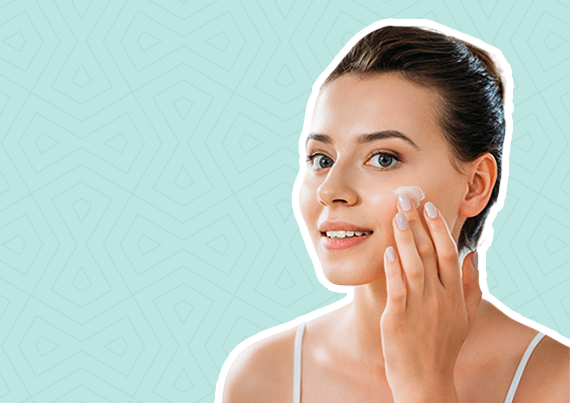The ABCs of Skincare: A Beginner's Guide to Building a Routine

The vast array of skin care products, regimens, and recommendations from both experts and influencers can be intimidating. If skincare is new to you, you might be wondering, "Where do I even begin?" Be at ease! This thorough beginner's guide will bring you through the fundamentals of skincare, assisting you in developing a straightforward yet efficient regimen that takes into account the particular requirements of your skin.
A is for Assessing Your Skin Type
The first step in building a skincare routine is understanding your skin type. Everyone's skin is different, and the products that work for one person may not be suitable for another. There are four primary skin types:
Normal
Not too oily or dry, with minimal sensitivity and few imperfections.
Oily
Excess sebum production often leads to shine and enlarged pores. Oily skin is prone to acne and blackheads.
Dry
Lacks moisture, feels tight or rough, and may show signs of flakiness or redness.
Combination
A mix of different skin types on different parts of the face. For instance, an oily T-zone (forehead, nose, and chin) and dry cheeks.
Once you've identified your skin type, you can tailor your skincare routine accordingly.
B is for Basic Steps: Cleansing, Toning, and Moisturizing
A basic skincare routine consists of three essential steps: cleansing, toning, and moisturizing. These steps should be part of your daily morning and evening routine.
Cleansing
Cleansing is the foundation of any skincare routine. It removes dirt, oil, makeup, and impurities that accumulate on your skin throughout the day. Choose a gentle, sulfate-free cleanser that matches your skin type. Here's how to do it:
- Wet your face with lukewarm water.
- Apply a small amount of cleanser to your fingertips.
- Massage the cleanser onto your face in circular motions for about 30 seconds.
- Rinse thoroughly with lukewarm water and pat your face dry with a clean towel.
Toning
Toning helps balance your skin's pH levels and prepares it for the next steps in your routine. Use a toner that suits your skin type, such as hydrating toners for dry skin or astringent toners for oily skin. Here's how to use it:
- Apply a small amount of toner to a cotton pad or your clean hands.
- Gently pat or swipe the toner across your face, avoiding the eye area.
- Let it absorb into your skin before moving on to the next step.
Moisturizing
Moisturizing is essential for keeping your skin hydrated and maintaining its moisture barrier. Even if you have oily skin, don't skip this step, as the right moisturizer can help balance oil production. Here's how to do it:
- Apply a pea-sized amount of moisturizer to your face and neck.
- Gently massage it into your skin using upward and outward motions.
- Allow it to absorb completely before applying sunscreen or makeup (if it's your morning routine).
C is for Customizing Your Routine
Beyond the basic steps, your skincare routine can be customized based on your skin's specific needs and any concerns you may have.
Sunscreen (A Morning Must)
Sunscreen is a non-negotiable step in your morning routine. It protects your skin from harmful UV rays that can cause premature ageing, sunburn, and skin cancer. Choose a broad-spectrum sunscreen with SPF 30 or higher and apply it generously to all exposed areas of your skin, including your face, neck, and hands.
Targeted Treatments
If you have specific skincare concerns, such as acne, fine lines, or dark spots, you can incorporate targeted treatments into your routine. These products typically contain active ingredients designed to address specific issues. Some examples include:
- Retinoids: For reducing fine lines and improving skin texture.
- Vitamin C serums: For brightening and reducing hyperpigmentation.
- Acne treatments: For managing breakouts and controlling oil.
When using targeted treatments, follow the instructions carefully, and introduce them gradually to avoid irritation.
Exfoliation
Exfoliation helps remove dead skin cells, revealing smoother, brighter skin. There are two main types of exfoliation: physical (using scrubs) and chemical (using acids). Be gentle with physical exfoliation, especially if you have sensitive skin, and use chemical exfoliants sparingly, as they can be potent.
D is for Diet and Hydration
Healthy skin starts from within. Your diet and hydration levels can have a significant impact on your skin's appearance. Here are some dietary tips for glowing skin:
- Stay hydrated: Drink plenty of water to keep your skin hydrated from the inside out.
- Eat a balanced diet: Consume a variety of fruits, vegetables, lean proteins, and whole grains for essential nutrients.
- Include antioxidants: Foods rich in antioxidants, such as berries, leafy greens, and nuts, can help protect your skin from oxidative stress.
E is for the Evening Routine
Your evening skincare routine is just as important as your morning routine, if not more so. At night, your skin undergoes a natural repair process, making it an ideal time to use targeted treatments and repair products. Here's a simplified version of your evening routine:
Cleanse
Remove makeup and cleanse your face to get rid of the day's impurities.
Treat
Apply any targeted treatments, such as retinoids or serums, as recommended.
Moisturize
Lock in moisture with a hydrating night cream or a heavier moisturizer.
Eye Cream
Apply an eye cream to address specific eye-area concerns, such as puffiness or fine lines.
F is for Finding Balance
Consistency is key when it comes to skincare. Stick to your routine for several weeks to allow your skin to adjust and see the best results. However, it's also essential to listen to your skin and adjust your routine as needed. If a product causes irritation or worsens your skin's condition, discontinue use and consult a dermatologist.
G is for Getting Professional Advice
If you have persistent skin concerns or complex issues, consider consulting a dermatologist. A dermatologist can provide expert guidance, diagnose skin conditions, and recommend prescription-strength treatments when necessary. Don't hesitate to seek their expertise for optimal skin health.
H is for Hands-Off
Learn to be gentle with your skin. Avoid picking at blemishes, and resist the temptation to touch your face throughout the day. Your hands can transfer dirt and bacteria to your skin, potentially causing breakouts or irritation.
I is for Individuality
Remember that skincare is not one-size-fits-all. What works for someone else may not work for you, so be patient and willing to experiment with products and routines until you find what suits your skin best.
J is for Joy
Lastly, enjoy your skincare journey! Taking care of your skin should be a self-care ritual that you look forward to every day. Embrace the process, and let it be an opportunity to pamper yourself.
A skincare routine involves understanding your skin type, choosing the right products, and being consistent. By following the ABCs of skin care, you can achieve healthy, glowing skin. However, skincare is not just about achieving flawless skin; it's about embracing self-care, self-love, and self-expression. Your skincare routine should be a moment of joy and relaxation, allowing you to connect with yourself and appreciate your unique journey. Remember to listen to your skin, be patient, and enjoy the process. Your skincare routine is an act of self-care, reminding you that you are worth the time and effort it takes to nourish and nurture your skin.












